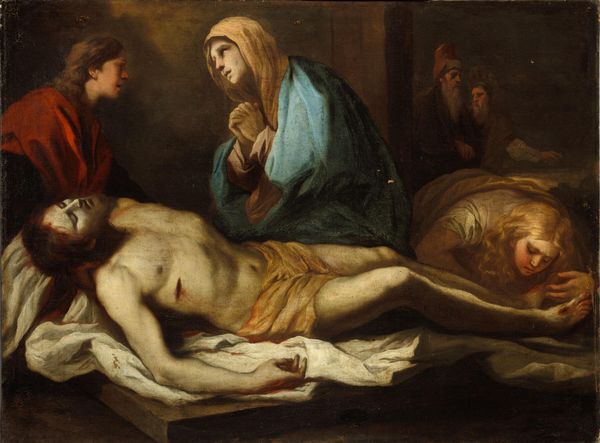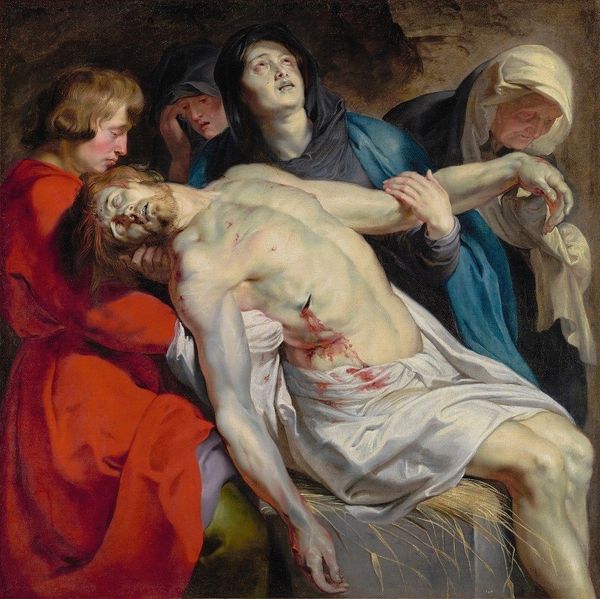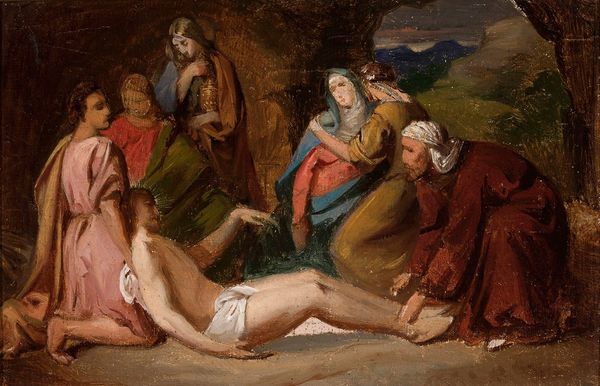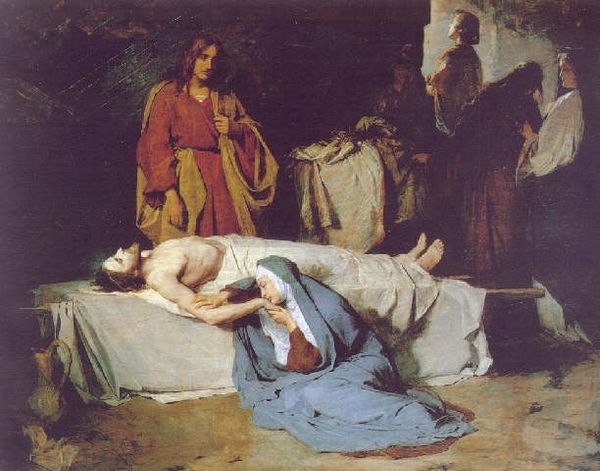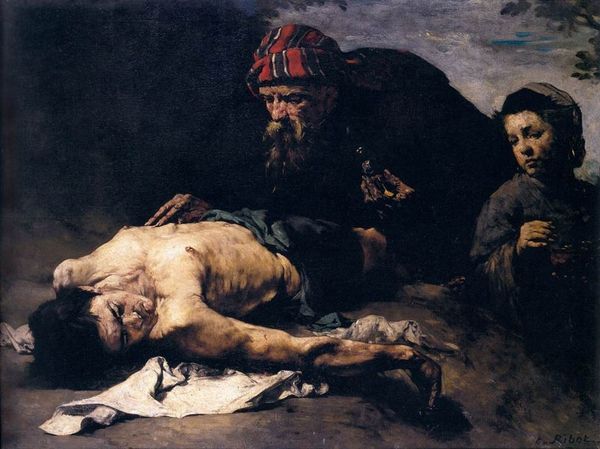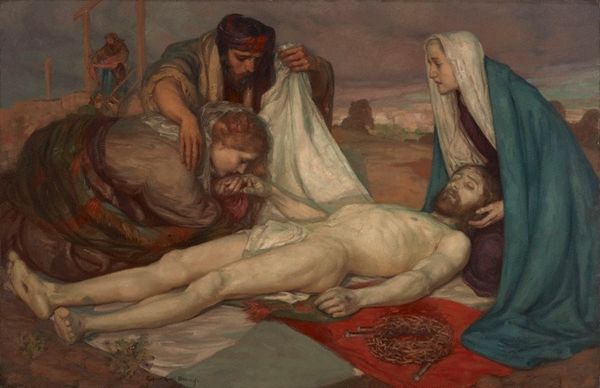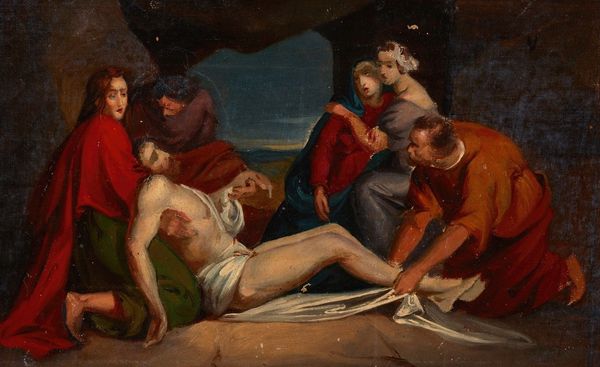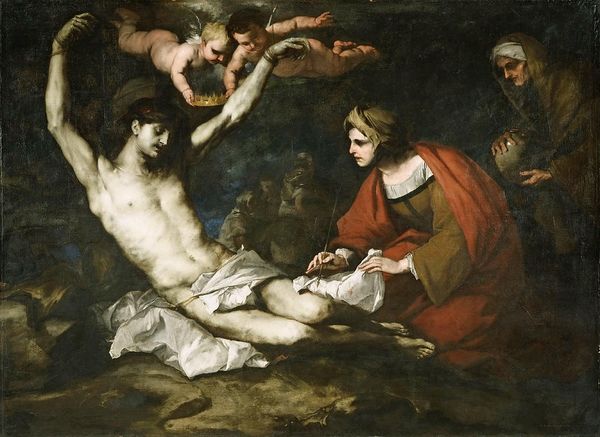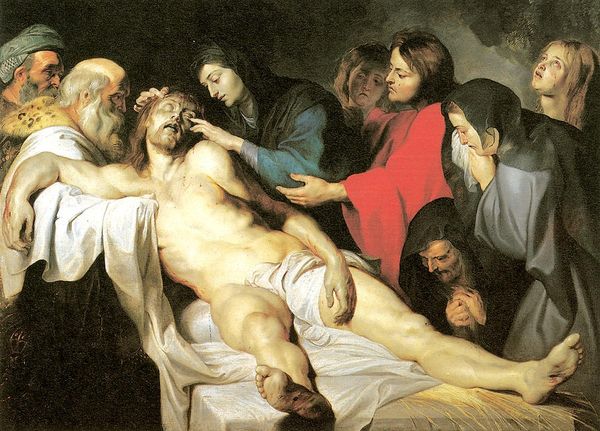
oil-paint
#
baroque
#
oil-paint
#
figuration
#
oil painting
#
history-painting
#
realism
Copyright: Public domain
Curator: Looking at this image, the figures huddled around the pale, limp body really strike a tone of grief and finality. What's your read, Editor? Editor: Indeed. The somber palette, coupled with the heavy drapery, definitely communicates mourning. What exactly are we observing here? Curator: This is Peter Paul Rubens’s oil on canvas, "The Lamentation of Christ," completed around 1614. It's currently held in the Kunsthistorisches Museum in Vienna. Editor: I find Rubens’s treatment of Christ's body incredibly compelling. Note how the lighting emphasizes the wounds, the material evidence of human cruelty, while simultaneously idealizing his form through classical composition. It's almost as though we're meant to meditate on both the physical reality and symbolic significance of the Passion. Curator: Absolutely. The artist skillfully juxtaposes suffering with the opulence of the Baroque style, seen through his lush application of oil paint and depiction of garments. Do you find there is perhaps a certain exploitation, presenting suffering in the style of the time? Editor: Certainly a tension. The raw materials and skilled labor involved in creating such a work highlight the economic structures supporting even religious art. This painting was, after all, intended for display, for consumption. It played a part in broader societal structures that shaped religious experiences and visual culture. The artist utilizes his patron's investment to render this suffering of Christ, with social impacts. Curator: Precisely. The acquisition of such paintings legitimized both personal and political authority through the association with such prominent events. Even now in its prominent placement in the museum, such paintings play this roll. The materiality of oil paint and canvas intersect with religious sentiment. Editor: And, crucially, this intersection happens within a very specific institutional context. The painting’s movement, from its original setting to a museum, profoundly changes its meaning, influencing our interpretations today, as part of an historical framework of art consumption and conservation. Curator: Very well put. These sorts of historical movements are a great point to be raised when experiencing the material context of a piece of work like this. Editor: I’ll agree with you on that point. This work presents a fascinating meeting of making and history!
Comments
No comments
Be the first to comment and join the conversation on the ultimate creative platform.
